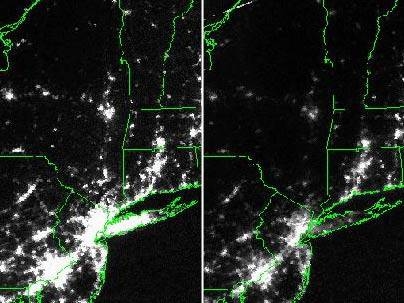Intense heat and record-breaking energy demand strained New England's electrical grid nearly to its limit on Wednesday, Aug. 2, but the regional system rose to the challenge, says an MIT professor who studies the economics of electricity distribution.
"They did really well in managing the system on a very difficult day," said Paul Joskow, the Elizabeth and James Killian Professor of Economics and Management.
Electricity demand in New England peaked at a record-high 28,021 megawatts on Aug. 2, according to ISO New England, the company that operates the region's electrical grid.
Unlike California, which endured a two-week heat wave that left many homes in the dark, New England was lucky that the mercury approached 100 degrees for only two days last week.
"If that (heat) had gone on for a week, they would have started having failures of equipment ��� and there might have been rolling blackouts," said Joskow, who is also director of the MIT Center for Energy and Environmental Policy Research.
To reduce the strain on the power grid, ISO New England offered payments to businesses willing to lower their electricity usage during the day. The company also bought electricity from Canada and directed excess power from Maine, the only New England state spared the heat crisis, to other states.
Last week's heat wave showed that the New England region has enough electricity to meet current peak demands, Joskow said, but no new plants are under construction, which could become a problem as electricity demand grows and as older, polluting plants need to be replaced.
"Demand continues to grow, especially peak demand on hot days, as more and more people put in air conditioning," he said.
Distribution problems
And even though the region generally produces enough electricity, blackouts often occur when the equipment that delivers electricity to neighborhoods and homes becomes overloaded. It is a common misperception that blackouts are caused by power shortages, but in any given year, about 90 percent of the power outages that customers experience are due to problems with the local distribution network, Joskow said.
For example, most of the recent blackouts in California, Missouri and New York City were caused by failures of distribution equipment due to high demand and extreme heat.
In New England, much of the distribution system was built in the 1960s and 1970s and is reaching the end of its useful life. Expenditures to replace aging equipment and to keep up with growing demand need to increase, he said. State regulators should create a robust regulatory framework that gives distribution companies sufficient resources and incentives to support these necessary investments, and consumers need to understand that they will have to pay for the associated costs, according to Joskow.
"As those facilities age and more and more demand is put on them, they're more prone to fail, especially during hot weather," Joskow said. "In the end, if your local distribution system fails, you don't get power, no matter how many generating plants there are in the region."






